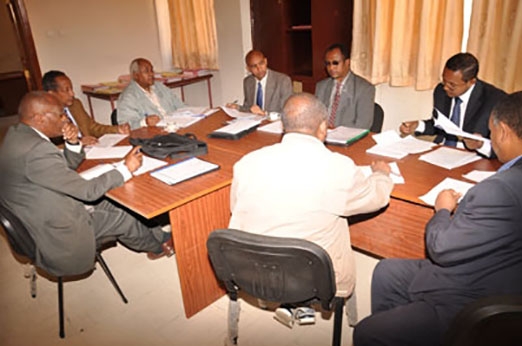ECSU Quality Audit Report Issued
Because of the fact that the concept quality has a complex and multifaceted nature; defining quality in general and in the context of education in particular is not an easy task. This consequently makes the mission of defining quality and getting consensus on ‘the of quality education?’ very difficult.
One of the most widely accepted and used definitions for quality in education is ‘fitness for purpose’. This definition also works in the context of Ethiopian education quality in the Higher Education Institutes. Therefore, every higher learning institute that adhere the aforementioned definitions should work by hard to satisfy the purpose they are established for. Unless they do so, the objective they set to achieve their existence is mere nominal and this consequently raises a big question on their existence.
In this regard, to check, whether educational firms attain the purposes they are created for or not, countries may device different quality assurance mechanisms. One of the mechanisms that help to do so is periodically performing a quality assurance audit by the external body.
Quality assurance audit, in this case, refers to preparing measures or a set of measures (standards) that help to gauge whether the given institution satisfies itself and demonstrate to its clients that it has constant capacity to keep its promise to deliver education of the desired standard.
The National organ that performs this task in Ethiopia is the Higher Education Relevance and Quality Agency (HERQA). It was established following the Higher Education Proclamation No 650/2009. The ultimate goal of performing quality assurance activities is ensuring the provision of relevant and appropriate education services to students and providing seamless feedbacks and supervisions to ensure it.
Currently, HERQA Auditors follow the fit for purpose quality assurance approach and use ten focus areas to assess and evaluate the quality of higher education with in both governments and private higher education Institutions. Identified areas of strengths are commended and shortcomings are observed and recommendation for important are made.
So far, 40 higher education institutions have been audited and 25 reports have published and disseminated to stakeholders.Including, the Ethiopian Civil Service University Institutional Quality audit report.
The ECSC has a good culture of conducting self evaluation. As evidence, we can mention the first (ECSC, 2001) and second (ECSC, 2008) phase impact assessments conducted so far respectively. The major purposes of the studies were to investigate the performance of the Ethiopian Civil Service University’s graduates in various federal and regional government offices, assess the effectiveness of education and training programs and gather the feedback of the public regarding the services of the university’s graduates.
To conduct the self evaluation on quality education audit, the university has already established Education and Training Quality Assurance Team under Institutional Planning and Assessment (IPA) and the team is responsible to facilitate both the internal as well as external audit visit. At the same time, the institute level and university level quality assurance committees were also formed.
The University self evaluation has followed a bottom up approach. First, the institute carried out their own self assessment with the support of the university quality assurance team. Then, based on the self evaluation report of institutes, data gathering instruments such as statistics, survey of facilities, interviews, questionnaire surveys, written comments, and analysis of documentation were employed.
The key inputs were gathered from senate members including the top management, institute directors, supportive core business process owners, students, student council, instructors and other relevant personalities. Schedule visits were conducted to all institutes by the University level quality assurance committee to clear the assertions through discussion with front line users and workers. Finally, the Self Evaluation Document (SED) is prepared and sends to HERQA.
Following the receipt of the SED, HERQA initiates a dialogue with our university to establish a timeline for the Institutional Quality Audit and to select an audit team. Later on two members of the audit team make a one day briefing visit. The purpose of the visit is to help ensure a common understanding of the audit procedure and to discussed the time table for the institutional quality audit.
The institutional quality audit is conducted during a four-day visit to our University by the team of auditors. The key purpose of the audit visit is to validate the SED submitted by the HEI.
During the visit, the team studies documentation, visit facilities, meet with staff and students and observe teaching. At the end of the visit, the team makes a brief oral report to the president of the University
Following the institutional quality audit visit the audit team drafts an audit report. The audit report is sent to the HEI to check for factual errors. The quality Assurance Unit of the university (formerly, known as Quality Assurance Team) received the draft report and used for two purposes: To prepare a status feedback for HERQA and to improve the Quality Enhancement plan of the University which had already been formulated based on the Self Evaluation Document. Moreover, the Institutes cascaded the University`s enhancement plan to their won context and developed an Institute enhancement plan and submit to Quality Assurance Unit for supervision purposes.
Finally, HERQA Publishes a final institutional quality audit report and issued the report on may 2013.In the report, the auditors really appreciate the university’s effort to provide a quality education as per HERQA’s standard. The report is distributed to every institute, department, center, unit of the University for the purpose of Scrutiny

